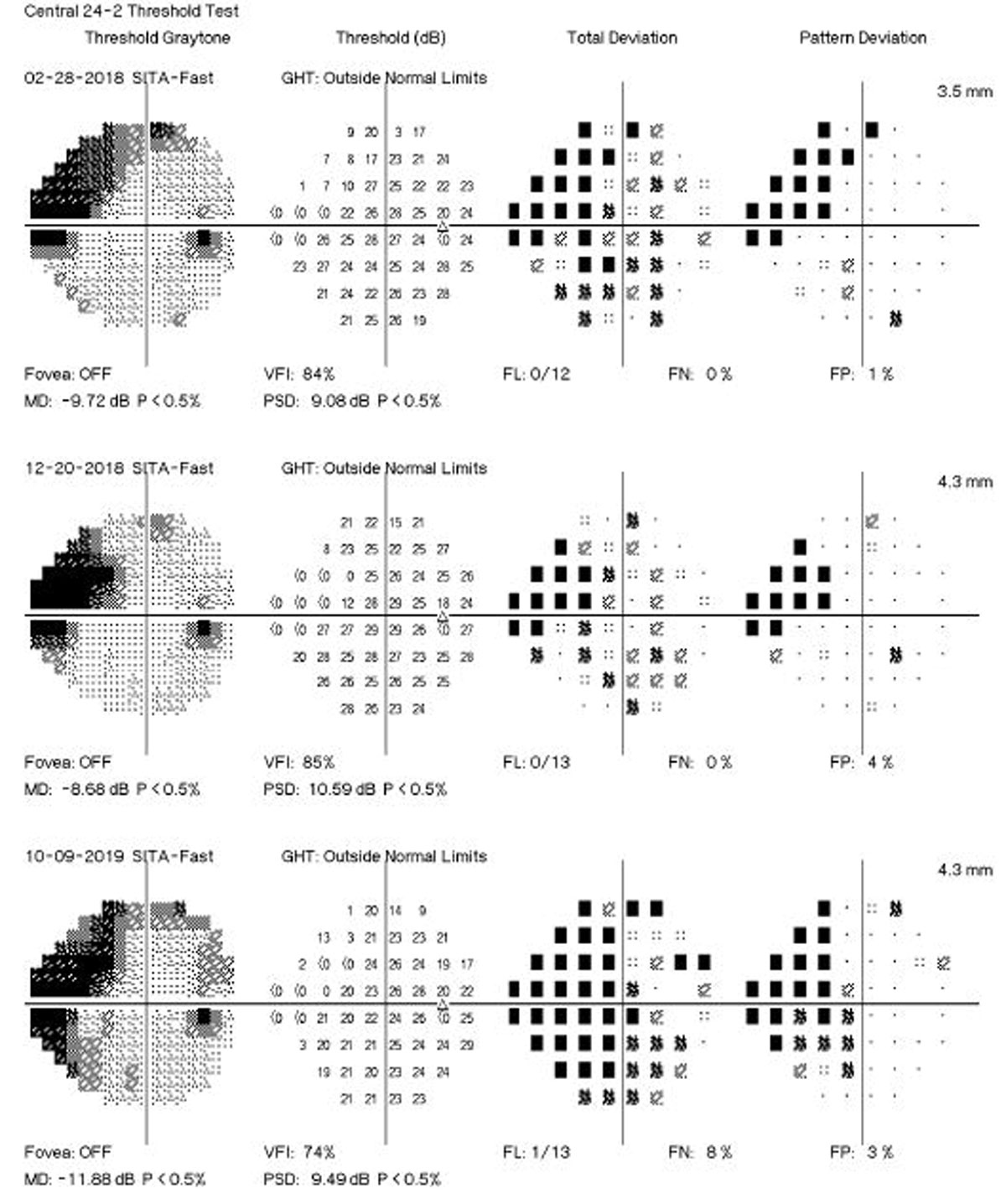 |
|
Genetic screening was found to help determine glaucoma progression in the early stage of the disease. Photo: Brian D. Fisher, OD. Click image to enlarge. |
Because primary open-angle glaucoma (POAG) can cause irreversible vision loss, it is crucial to provide timely diagnosis and treatment. Unfortunately, in the early stages of the disease, it can be difficult to provide patients with a definitive diagnosis. Since early-stage prognosis is hard to determine, regular monitoring of suspected patients does not always result in development of the disease. Some may never develop it, while others that are high-risk may receive delayed or inadequate treatment because of the uncertainty at this stage.
Could genetic screening help? Since POAG is one of the most common heritable diseases, one new study sought to assess glaucoma’s polygenic risk association with progression in the early stage of the disease. Both clinical and genetic data was collected over eight years from a prospective longitudinal study and assessed for glaucoma polygenic risk score (PRS).
PRS was established by correlating the rate of peripapillary retinal nerve fiber layer thinning on OCT and visual field loss progression by 24-2 Humphrey visual fields with single-nucleotide variants in 1,103 genotyped participants from the Progression Risk Of Glaucoma: Relevant SNPs with Significant Association study.
In the present study, 1,777 eyes displayed structural progression and 1,563 eyes displayed functional progression. The most significant findings include the top 5% of the PRS risk group analyzed to have a higher risk of visual field progression at five years than the remaining 95%. On the other end, the bottom 20% of the PRS risk group were found to be at a lower risk of visual field progression than the intermediate risk group over a period of three years.
All this points to rapid structural and functional early POAG progression associated with a higher polygenic risk, the researchers argue. “Those in a high PRS group may deserve particular attention: despite more intensive treatment, these individuals remained more susceptible to progression,” the researchers wrote in their paper for JAMA Ophthalmology. As such, PRS may serve as a way to identify individuals more likely to develop later-stage disease, who would subsequently benefit more from frequent surveillance and intensive treatment, such as including a lower target IOP.
The researchers note that they expect the true association of PRS with glaucoma progression to be even greater, since treatment is initiated or escalated when glaucoma has worsened. A similar association is anticipated with PRS and time from treatment initiation or escalation.
In addition, they noted, “the lower-risk group may require less frequent monitoring or higher treatment threshold.” However, their findings of the lower PRS group progressing slower did not persist at five-year follow up, which may be attributable to reduced statistical power or potentially a treatment effect (e.g., more intensive treatment slowing down progression in other PRS groups), the team explained.
While the PRS used in this study is not publicly available for use by clinicians, the study adds credence to the notion of genetic screening in appropriate individuals at risk for glaucoma progression.
Siggs OM, Qassim A, Han X, et al. Association of high polygenic risk with visual field worsening despite treatment in early primary open-angle glaucoma. JAMA Ophthalmol. November 10, 2022. [Epub ahead of print]. |


